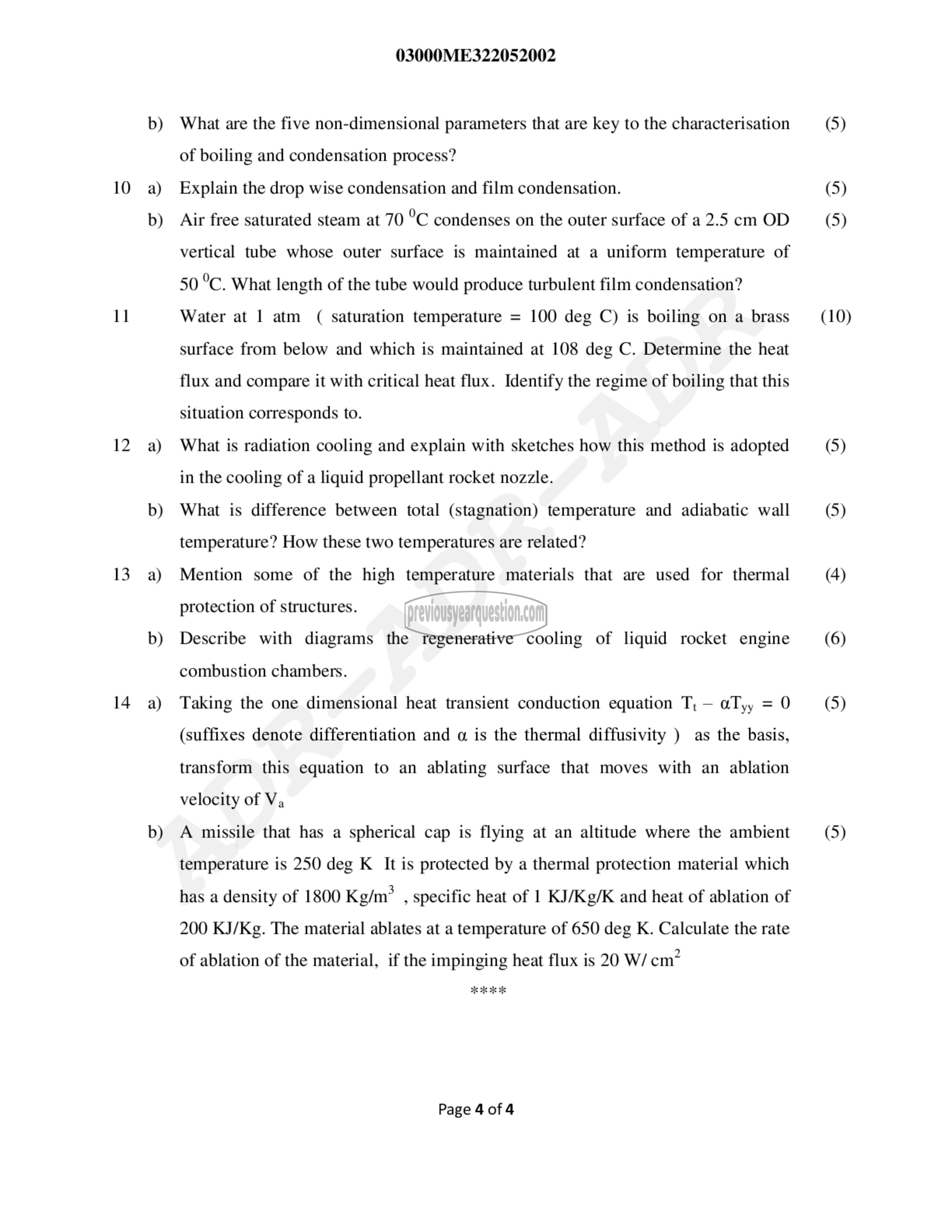APJ ABDUL KALAM TECHNOLOGICAL UNIVERSITY Previous Years Question Paper & Answer
Semester : SEMESTER 6
Subject : Heat Transfer
Year : 2020
Term : SEPTEMBER
Branch : AERONAUTICAL ENGINEERING
Scheme : 2015 Full Time
Course Code : ME 322
Page:4
10
11
12
13
14
b)
a)
b)
a)
b)
a)
b)
a)
b)
03000ME322052002
What are the five non-dimensional parameters that are key to the characterisation
of boiling and condensation process?
Explain the drop wise condensation and film condensation.
Air free saturated steam at 70 °C condenses on the outer surface of a 2.5 cm OD
vertical tube whose outer surface is maintained at a uniform temperature of
50 °C. What length of the tube would produce turbulent film condensation?
Water at | atm ( saturation temperature = 100 deg C) is boiling on a brass
surface from below and which is maintained at 108 deg C. Determine the heat
flux and compare it with critical heat flux. Identify the regime of boiling that this
situation corresponds to.
What is radiation cooling and explain with sketches how this method is adopted
in the cooling of a liquid propellant rocket nozzle.
What is difference between total (stagnation) temperature and adiabatic wall
temperature? How these two temperatures are related?
Mention some of the high temperature materials that are used for thermal
protection of structures.
Describe with diagrams the regenerative cooling of liquid rocket engine
combustion chambers.
Taking the one dimensional heat transient conduction equation 1 - aTyy = 0
(suffixes denote differentiation and ൨15 the thermal diffusivity ) as the basis,
transform this equation to an ablating surface that moves with an ablation
velocity of Va
A missile that has a spherical cap is flying at an altitude where the ambient
temperature is 250 deg K_ It is protected by a thermal protection material which
has a density of 1800 Kg/m* , specific heat of 1 KJ/Kg/K and heat of ablation of
200 KJ/Kg. The material ablates at a temperature of 650 deg K. Calculate the rate
of ablation of the material, if the impinging heat flux is 20 W/ cm?
Page 4 of 4
6)
(5)
(5)
(10)
(5)
(5)
(4)
(6)
(5)
(5)
